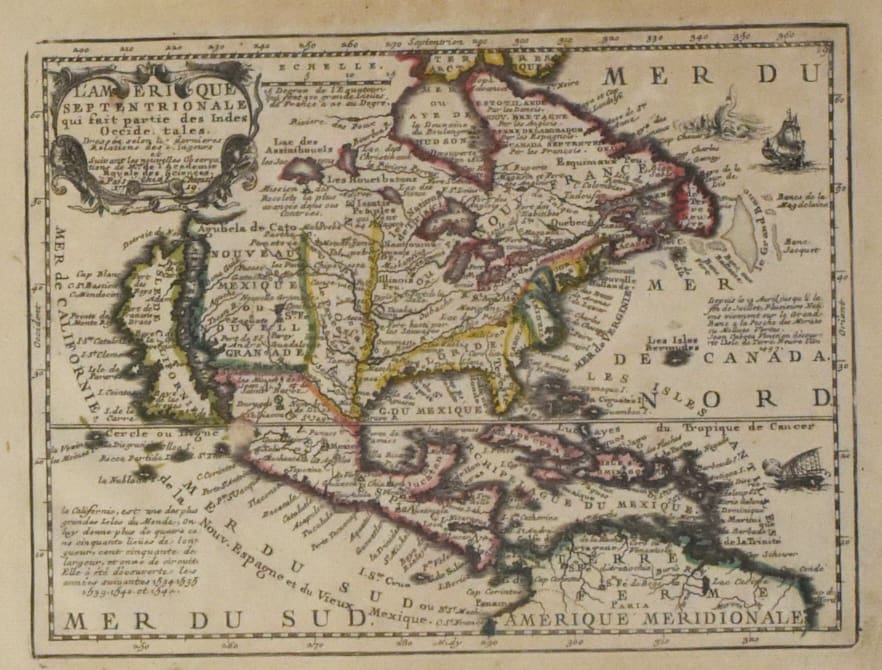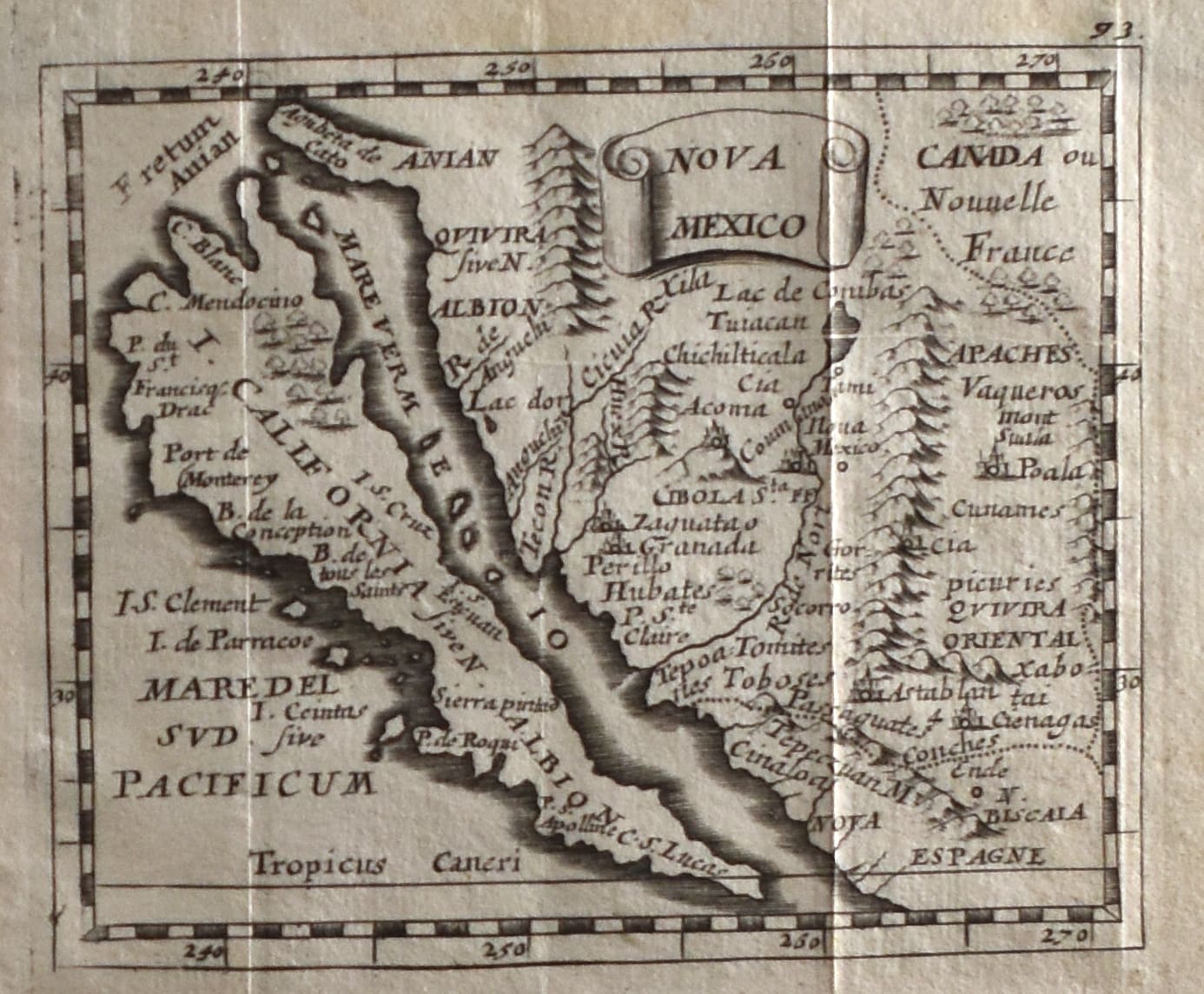
Mysterious Maps
Interested in selling a map?
We have received top dollar for
maps. Auction is the best way to quickly and transparently get maximum dollar for your artwork.

Pieter Goos (ca. 1616-1675), Paskaerte van Nova Granada en t’Eylandt California, 1666. Sold for $8,000 in Fine Books, Maps, and Manuscripts, January 13, 2020.
Mysterious Maps: California as an Island
Imagine sailing off to a land so beautiful it was compared to the Garden of Eden. This island was, to sea-weary sailors, nothing short of paradise. Many tried to map it, but it was hundreds of years and many attempts before cartographers fully understood its elusive geography. Want to know this wondrous place for yourself?
Well, you’re in luck. Because the only thing standing between you and this island of legend is a discount plane ticket from Spirit Airlines. Its name? California.
Oh, yeah, that’s right. We know now that California is not an island but is snugly attached to the rest of the continent. In the seventeenth century, a mixture of imagination and inaccurate or garbled accounts from travelers led cartographers to depict California as an island paradise. European explorers, including Hernan Cortes, having mapped Baja, assumed California to be surrounded on all sides by sea. In fact, it was named after the truly fictional California from the contemporary novel, The Adventures of Esplandián.

Most iterations show the island extending halfway up what was considered the west coast. On the island’s north side, two inlets give the mass’s flat top variety. These are a consistent feature among maps, demonstrating how much cartographers borrowed from one another. Some maps, such as Pierre Duval’s late 17th century map of “Nova Mexico,” include other fictional elements than just California as an island–this map includes Cibola, the mythical seven cities of gold.

Jacques Chiquet (1673-1721), Nova Mexico, 1719. Sold for $480 in Fine Books, Maps, and Manuscripts, January 13, 2020.
The trend of California being depicted as an island in maps began its decline after the 1705 publication of Father Eusebio Kino’s A Passage by Land to California, a map based on his extensive travels in California and the surrounding areas. Still, maps and books continued to be published which depicted California as an island well into the mid 18th century. Cartographers, lost in the dreams of yesteryear, grasped at the legend with each publication. Although this dream has been lost in light of discoveries made, nostalgia remains.
These guides, part of one of the largest geographical errors in history, harken back to a time when the world was vast and unknowable. Frame, it, hang it, and be reminded of these ways gone. And, hey, it might even come in handy. California, now but shakily attached, is a couple of earthquakes away from breaking off and becoming an island for real. Love the past, or have an obsession with an imminent future? Either way these maps are for you.
If you have a map you would like to sell or have appraised, please get in touch for a free auction estimate.